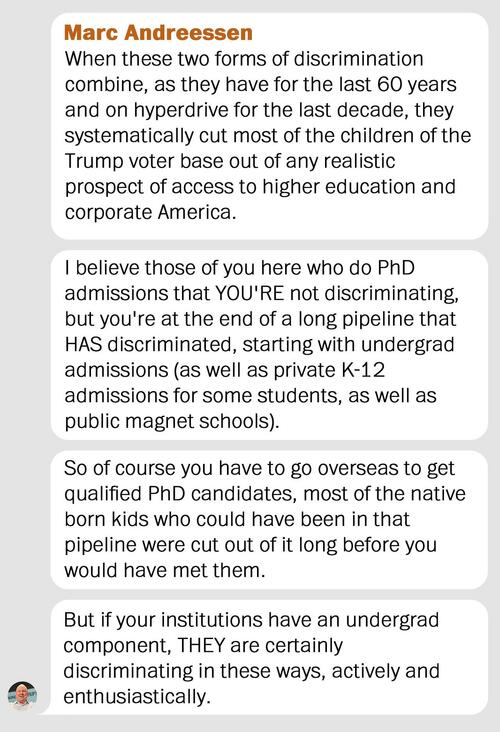DuPont Agrees to $27M Settlement in Hoosick Falls Water Contamination Lawsuit + More

Source: Children’s Health Defense
DuPont Agrees to $27M Settlement in Hoosick Falls Water Contamination Lawsuit
The village of Hoosick Falls is nearing a final victory against the companies that were accused of contaminating its water supply: DuPont has agreed to settle a class action lawsuit for $27 million.
In 2016, a chemical called PFOA, which had been used in the making of Teflon at a fabric-coating plant in Hoosick Falls, was discovered in the village’s water supply. PFOA is one of thousands of substances that are known as “forever chemicals” because they persist in the environment for hundreds or even thousands of years instead of breaking down.
Exposure to these chemicals, also called PFAS, has been linked to cancer and other health issues. PFOA in particular has been linked to kidney and testicular cancer, as well as conditions including ulcerative colitis and thyroid disease. The lawsuit was filed against four companies: 3M, Saint-Gobain, Honeywell and DuPont.
Airborne Pesticides Are More Harmful and Persistent Than We Thought
New research suggests that widely used agricultural pesticides, particularly those used in grape growing, may be far more persistent in the atmosphere than current regulations account for.
Current European pesticide regulations only assess the gas-phase half-lives of pesticide molecules. If this half-life is more than two days, it is classified as a persistent organic pollutant.
However, many pesticides are semi-volatile, meaning they can attach to airborne particles like dust or organic matter, moving from gas-phase to a particulate phase, in which the molecules degrade more slowly, meaning they can travel further from the site of application. Led by Dr. Samia Boulos, a team from Aix-Marseille University and CNRS in France focused on nine commonly used pesticides in viticulture.
In a series of laboratory simulations, the team found that all nine pesticides had atmospheric half-lives longer than the two-day threshold set by the Stockholm Convention, the international agreement that governs persistent organic pollutants. The longest-lasting, Folpet, had a half-life exceeding a month, while the shortest-lived, Cyprodinil, still remained in the air for three days.
People Who Breathe Dirty Air Are at Higher Risk of Brain Tumours That Do Not Usually Cause Cancer
Exposure to higher levels of air pollution over time was tied to a higher risk of meningioma, a type of brain tumor that is not usually cancerous but can cause other health problems. People exposed to higher levels of air pollution appear more likely to develop a type of brain tumor that does not typically cause cancer but can lead to other health issues, a new study has found.
Meningiomas are the most common type of primary brain tumour, and grow slowly enough that it can take years before they are detected. They originate in membranes that surround the brain and spinal cord. Only rarely are they cancerous, but meningiomas can cause other disabilities by affecting nearby brain tissue, nerves, or vessels.
For the study, researchers followed nearly four million adults in Denmark over a 21-year period. About 16,600 people developed tumours of the central nervous system, including about 4,600 who developed meningioma. The researchers then estimated their exposure levels to different types of air pollution, for example traffic emissions and diesel pollution, over a decade.
Scientists Turn Plastic Waste Into Pain Medicine
Researchers have devised a way to make a commonly used pain and fever reduction medication from plastic waste. Yes, you read that right. They used genetically engineered microbes to transform a molecule obtained from polyethylene terephthalate plastic into paracetamol. Also known as acetaminophen, paracetamol is the active ingredient in widely available over-the-counter pain and fever reduction medicines, sold under brand names like Tylenol, Panadol or Dolo.
Upward of three-quarters of the common medicines that we rely on are currently derived from fossil carbon. “Paracetamol is a really good example of that,” Stephan Wallace, the study’s corresponding author and professor of chemical biotechnology at the University of Edinburgh, Scotland, told Mongabay in a video call. “It’s currently derived from benzene, which is a really unsustainable petrochemical, by industrial processes that emit, quite frankly, unacceptable amounts of greenhouse gases into the atmosphere.”
Nearly all plastic is derived from fossil fuels and very little is recycled. The vast majority of plastic waste ends up in landfills, incinerators or the environment, especially oceans. So, the researchers wanted to see if they could turn a problem waste product into something useful.
Sunscreen and Plastics Co-Pollution ‘Is a New Threat to Marine Life’
Oceanographic Magazine reported:
A chemical found in sunscreen could be making plastic pollution in the ocean even harder to break down, new research from the University of Stirling has found.
The chemical Ethylhexyl Methocxycinnamate — commonly known as EHMC — could be slowing the degradation of discarded plastic in our seas and helping biofilm bacteria, which have greater protection from harsh conditions, to thrive.
Led by Dr Sabine Matallana-Surget, scientists at the University of Stirling carried out the analysis, which is the first to study co-pollution — the process by which plastics in the sea act as carriers for other chemical contaminants, including ultraviolet filters from sunscreen. Dr. Matallana-Surget — an associate professor in the Faculty of Natural Sciences, is appealing to policymakers to take urgent action to tackle what she calls ‘the invisible threat of sunscreen.’
“These changes matter,” she said. “By suppressing the aerobic bacteria that help degrade plastic, and selecting those that stabilise or reinforce the biofilm, UV filters would prolong the life of plastics in the ocean — making them more resistant to breakdown by sunlight or microbes. “Targeted research and policy interventions are therefore urgently needed to mitigate these compounded ecological threats.”














